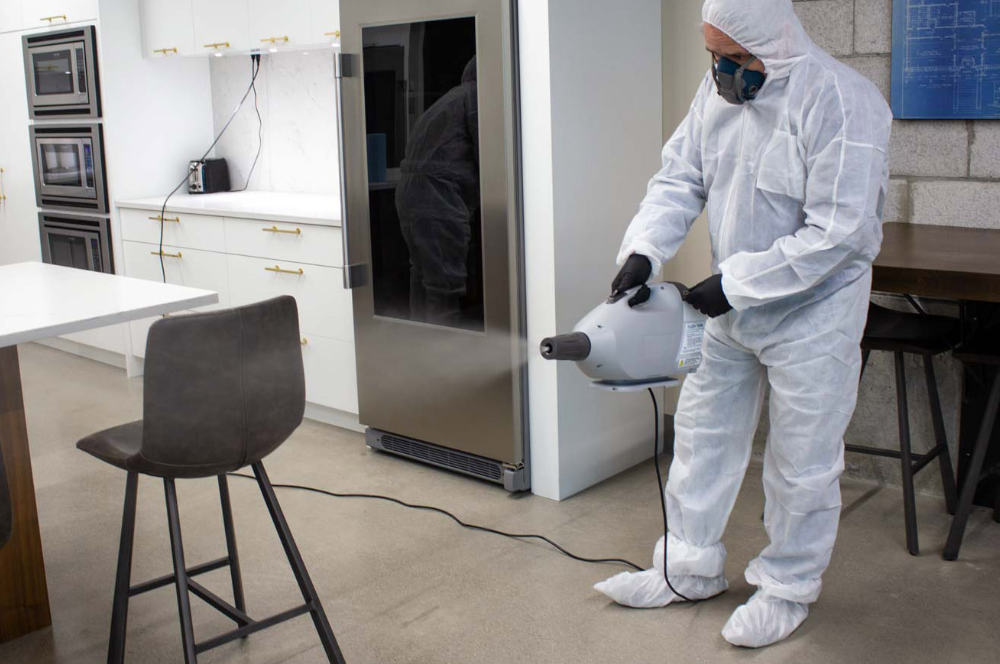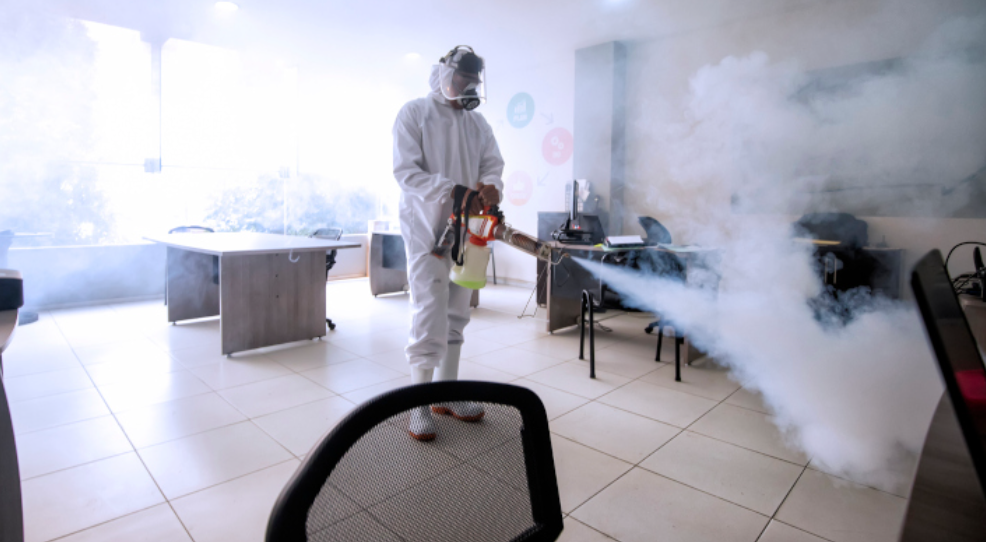There is no denying the extent to which COVID-19 has changed the way people live their lives. For better or for worse, the pandemic has brought an emphasis on the importance of sanitation and disinfection. After all, one of the most effective ways to prevent the spread of the virus is through simple hand washing.
There is still much about the virus that is left uncertain. It is, however, unsurprising how the rise of the virus has likewise given popularity to several disinfection methods. To be fair, there truly is nothing wrong with erring on the side of safety.
Disinfectant fogging is one of the more popular services for offices and commercial spaces. This technology has been around for years, but the pandemic has pushed it into the spotlight. In this article, we’ll look at what it is and whether it’s a good option for your workplace.
What is Disinfectant Fogging?
Truth be told, surface disinfection is a very effective way to halt the spread of the COVID-19 virus. However, for high traffic areas like your office space, it is almost impossible to wipe down every surface at all times. Fogging is a great alternative for large high traffic spaces like hallways, elevators, or stairs, that are at high-risk for spreading the disease.
Fogging creates a wide-reaching gust of air that gets to every nook and every cranny – even the hard to reach areas in your office. It disinfects a space in one go.
While fogging is safe, there are caveats to its effectiveness. Simply “fogging” an area without pre-cleaning and abiding by the CDC protocols is a violation of the federal law. It is also important to note that the CDC doesn’t deem fogging as the most effective method to curb the spread of the disease. It is more effective as a supplement to existing cleaning protocols.
How Does it Work?
The process of fogging is pretty straightforward albeit special tools are necessary in order to effectively conduct the process. At the onset, a ULV fogger, or Ultra Low Volume fogger, is loaded with a special type of antibacterial solution. This machine converts the liquid into vapor. To truly be effective, the area being disinfected is sealed off. A fan is used to disperse the vapor into the whole of the space.
This disinfection method would cover everything – all your lighting fixtures, every type of window, and every surface.
Benefits of this Method
Fogging is an effective and efficient means to disinfect a large area. However, the type of disinfection method that you use for your office depends on the kind of operation that you run. It is your responsibility to weigh out your options and make a decision. Below are the benefits of fogging:
Fogging Cleans Difficult to Reach Areas
When it comes to COVID-19, you truly can’t be too safe. The disease is known to spread through tiny respiratory droplets that can land and stay active on a surface for a considerable amount of time.
That said, fogging cleans even the most difficult to reach areas. This is probably its biggest benefit. Unlike surface cleaning, there are no limitations to the areas that fogging disinfects. It is able to reach and disinfect the entirety of the space.
Fogging Saves You Time and Resource
Again, it cannot be stressed enough – fogging should not be the only cleaning recourse that you take for your office. However, there is no denying the convenience that it affords. Employing to sanitize your whole office space with nothing more than a spray bottle and a rag takes hours and a lot of manpower. Fogging disinfects an area in one encompassing swoop.
Fogging Can Help with a Bug Infestation
In some countries, a type of fogging is used to tackle bug infestation. Tropical countries, in particular, use fogging for mosquitos in order to curb the spread of dengue. While the jury is still out on its effectiveness, it is an added benefit that you can enjoy especially if you have any lurking office bedbugs in your space.
Are There Any Drawbacks to Disinfectant Fogging?
As with all disinfection methods, there are some drawbacks to fogging. Below are a few:
Fogging can Cause Adverse Health Reactions
There are types of fogging that can cause adverse health reactions, especially for younger children. According to some studies, fogging can trigger asthma attacks, wheezing, skin irritation, nausea, and headaches. To be fair, these reactions can be mitigated with proper fogging precautions.
Fogging Can Give You a Fall Sense of Security
While fogging is able to disinfect a large area, it shouldn’t be the only thing you should do as a business owner to ensure the safety of your employees. Again, it is a great supplement to an already existing cleaning routine. One of the pitfalls fogging clients fall into is the idea that fogging is enough of a precaution. This false sense of security can have dire consequences.
How Do You Prepare for a Fogging Session?
If you are considering fogging for your office space, there are steps that you need to take in order to keep your assets safe. These are a few protocols that should be done before a fogging session.
Schedule it on a Weekend
For one, it is a good idea to schedule the session on a weekend. The entire process would disrupt day-to-day operations and it isn’t the safest to keep employees near the area that is being fogged.
Cover Machinery
There are some reports that residue from fogging can cause damage to heavy machinery. Heavy machinery is an expensive investment. While the damage is minimal, it is still best to protect your assets.
Clear Surfaces with Any Eating Utensils
Fogging is generally safe. However, the residue might be toxic when ingested. As such, best to keep cutlery and tableware in storage for the entirety of the process.
COVID-19 has ushered in a new normal and this new reality seems to be here for good. As a business owner with the responsibility of keeping your employees safe, fogging is one of the many options that you can invest in. They are after all your biggest assets.

